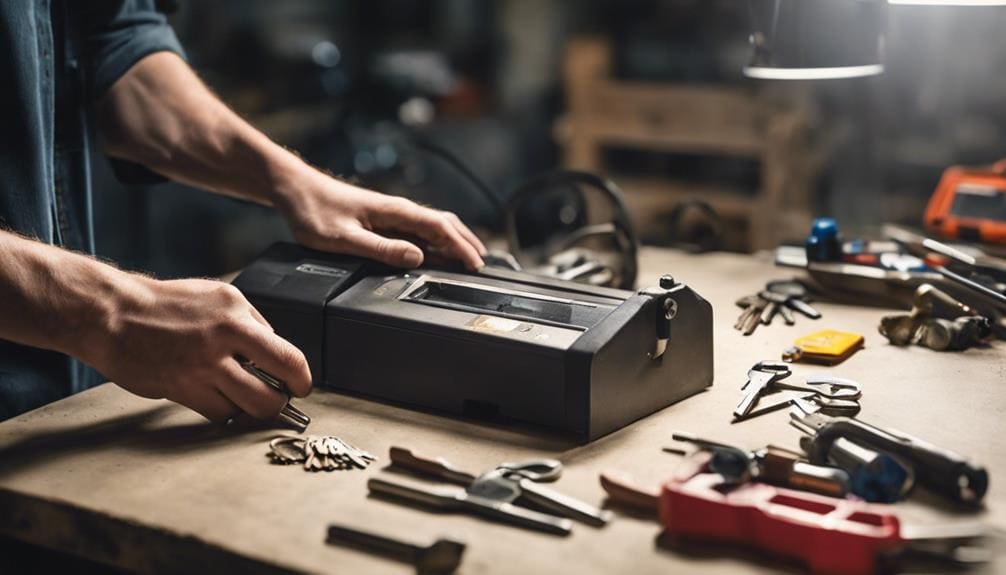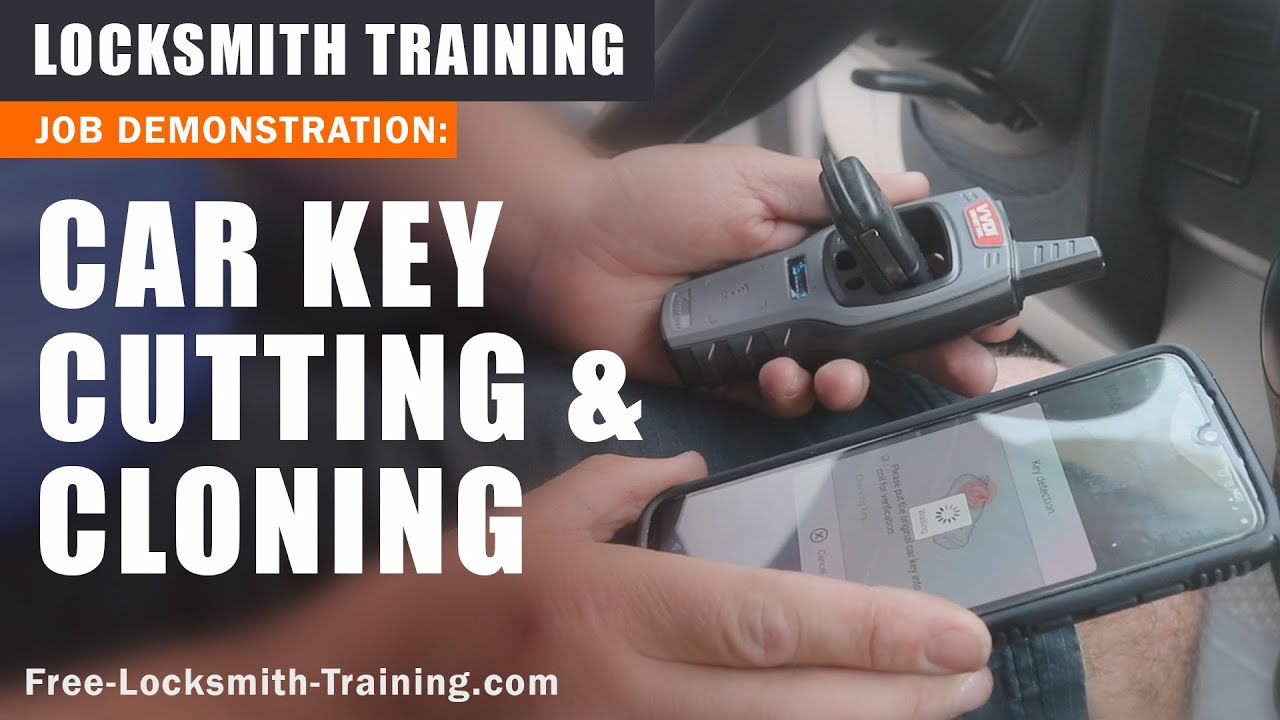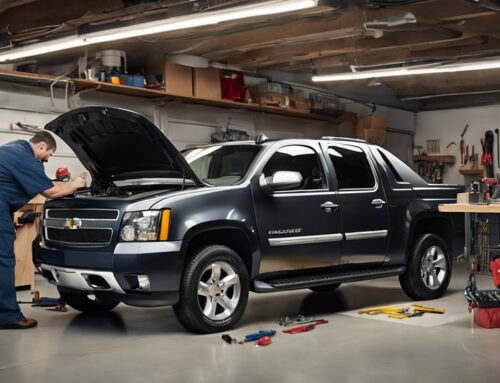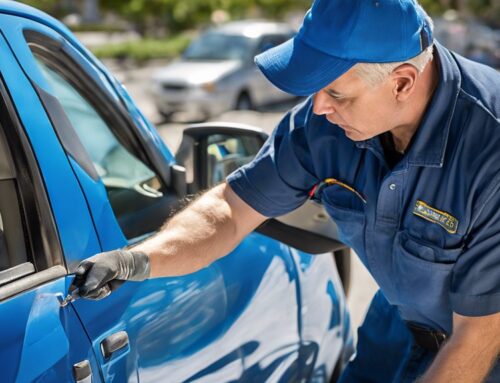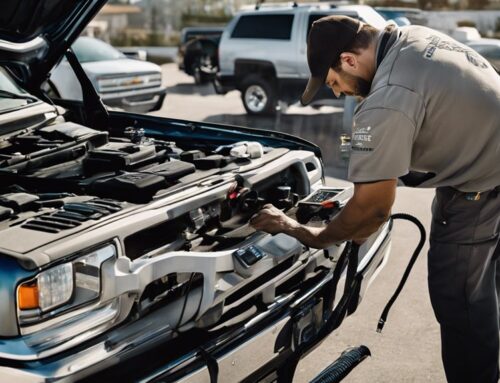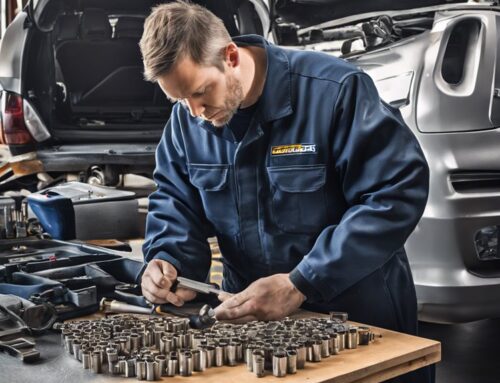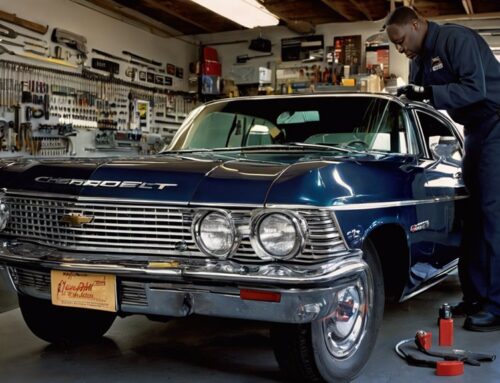Yes, you can cut your own car keys if you’ve got the right tools and follow precise steps. First, identify your key type—traditional, transponder, remote, or smart. Gather necessary equipment: a key cutting machine, key blanks, safety gear, and a key duplicator. Follow key specifications meticulously, using a caliper for exact measurements. Beware of risks like damaging your ignition or creating an inaccurate key. For electronic keys, learn specific programming instructions. In complex cases, consider professional help to avoid costly mistakes. Ready for detailed steps and tips?
Key Takeaways
- DIY car key cutting is possible with the correct key cutting machine, key blanks, and safety equipment.
- Accurate key measurements and adherence to manufacturer specifications are crucial for successful DIY key cutting.
- DIY key programming requires specific devices like OBD-II programmers and following brand-specific instructions.
- Risks include potential damage to the key and ignition, improper cutting techniques, and expensive repairs.
- Professional locksmiths offer precision, expertise, and security, especially for complex key types and programming needs.
Understanding Car Key Types
When you’re planning to craft a car key, understanding the various types of car keys is vital, including traditional metal keys, transponder keys, remote keys, and smart keys, each with distinctive cutting and programming requirements. Traditional metal keys are the simplest, requiring only precise key cutting to match the lock.
For transponder keys, the process is more intricate. These keys have a chip in the head that communicates with your car’s immobilizer system. After the key cutting, you’ll need to follow specific programming procedures to synchronize the key with your vehicle, making sure it starts properly.
Remote keys combine a standard key with buttons for locking and accessing the car. Key cutting is necessary for the physical key portion, but you’ll also need to use programming procedures to activate the remote functions.
Smart keys offer the most convenience with push-button start and keyless entry. Unlike traditional key cutting, these keys often involve advanced programming to communicate seamlessly with your car’s computer system.
Knowing the differences between these car key types helps you choose the right key cutting service and guarantees you follow the correct programming procedures for a functional, secure key.
Tools and Equipment Needed
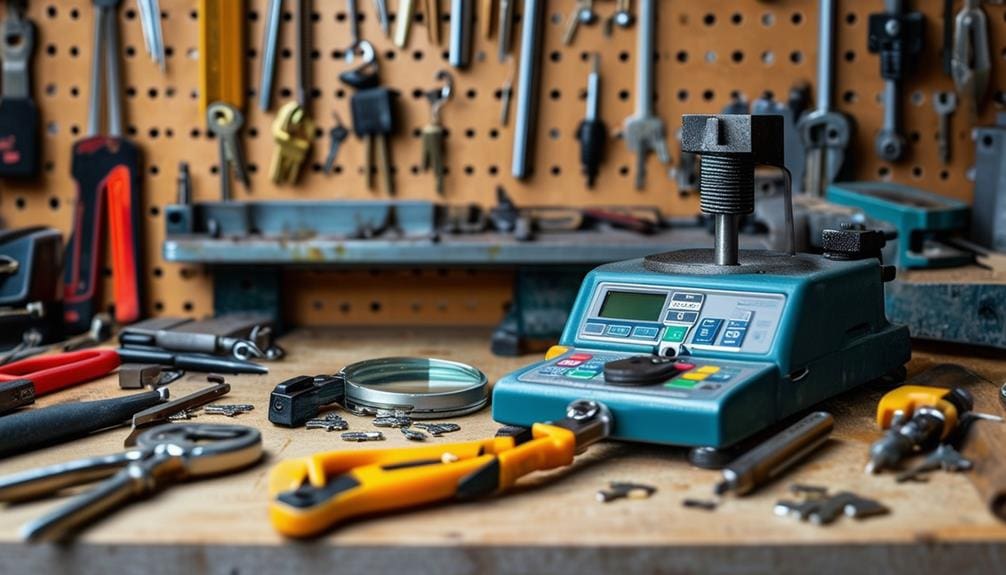
To start your DIY car key cutting project, you’ll need important tools like key cutting machines, key blanks, and key code software. Key programming devices are essential for electronic and transponder keys. Always follow safety precautions, including wearing protective eyewear and gloves, to guarantee a safe and successful process.
Essential Cutting Tools
Equipped with the right tools, DIY car key cutting becomes a straightforward task that requires a key cutting machine, a code cutting machine, key blanks, and calipers for precise measurements. Let’s explore the essential cutting tools you’ll need:
- Key Cutting Machines: These machines are essential for duplicating keys accurately. They replicate the original key’s cuts onto a new key blank, guaranteeing a perfect match.
- Code Cutting Machines: If you’ve obtained the key code from your vehicle manufacturer, a code cutting machine can accurately cut a key based on this code. This secures that the duplicate keys fit your vehicle’s lock perfectly.
- Key Blanks: These uncut keys act as templates for duplication. Make sure to select key blanks that are compatible with your vehicle’s lock system.
- Calipers: Precision is vital in key cutting. Calipers help you take precise measurements of the original key to make sure the new key is cut to the correct size and shape.
Key Programming Devices
Revealing the full potential of your DIY car key cutting project requires you to get familiar with key programming devices, essential tools for syncing new keys with your vehicle’s onboard computer system. Key programming devices, also known as key programmers, are necessary for key fob programming, transponder key programming, and remote key programming. These tools come in various forms, such as handheld programmers, OBD-II programmers, and software-based programs.
To get started, you must understand the different types of key programming devices available. Each type offers unique functionalities tailored to your specific needs:
| Device Type | Functionality |
|---|---|
| Handheld Programmers | Portable, user-friendly, ideal for quick tasks |
| OBD-II Programmers | Connects via OBD-II port, offers thorough access |
| Software-Based Programs | Requires a computer, provides advanced features |
Before using a key programmer, make sure it’s compatible with your vehicle’s make and model. Follow the device instructions closely to sync the new key with your vehicle’s onboard computer. Start by connecting the device to the car, either through the OBD-II port or wirelessly, depending on the model. Then, initiate the programming sequence as directed.
Safety Precautions Required
When starting on your DIY car key cutting project, always prioritize safety by wearing protective eyewear and gloves, and carefully follow the manufacturer’s instructions. This guarantees that you protect yourself from any potential hazards and achieve accurate results.
Here’s a list of essential tools and equipment needed for safe and effective key cutting:
- Key Duplicator Machine: This is the main tool you’ll use to cut the new key. Make sure to follow the manufacturer’s guidelines for setup and use.
- Protective Eyewear and Gloves: These safety measures protect your eyes from flying debris and your hands from sharp edges during the cutting process.
- Key Blanks and Cutting Wheel: Make sure you have the correct type of key blanks and a sharp cutting wheel. A steady hand is important when guiding the key blank through the cutting wheel to maintain precision.
- Key Gauge and Caliper: These tools help measure the original key accurately, ensuring the duplicate matches perfectly. Knowing key cutting techniques is vital for using these tools correctly.
Steps for Cutting Keys
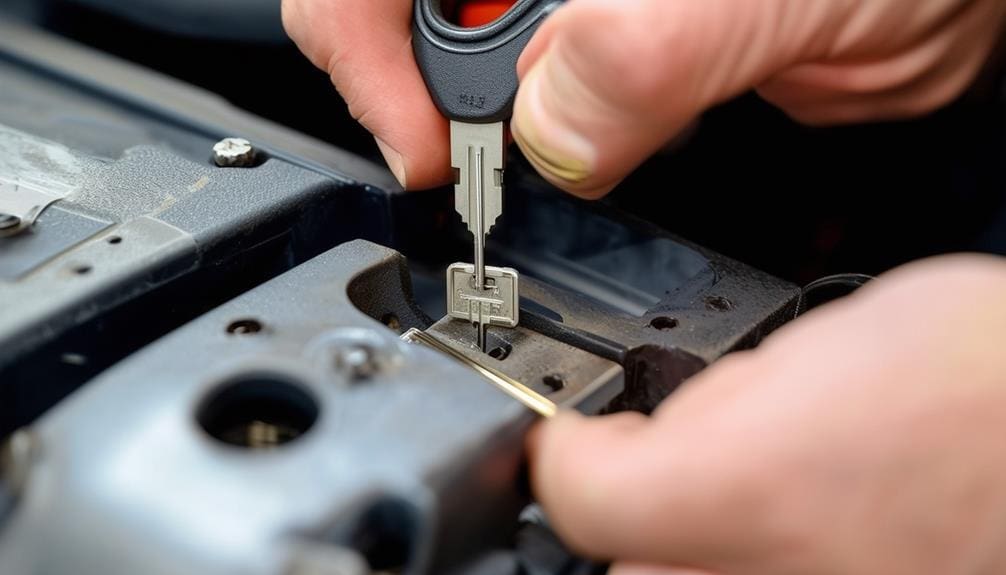
Start by gathering all necessary tools, including a smartphone for capturing photos and a car key cutting kit. Confirm you follow key specifications by taking clear, well-lit photos of your key’s contours. Next, use the Key by Photo technology to digitally map and accurately cut your new key.
Gather Necessary Tools
Before you start cutting your car keys, gather necessary tools like a key cutting machine, key blanks, and a key duplicator. These items are vital for guaranteeing a smooth and precise key cutting process.
Here’s what you’ll need:
- Key Cutting Machine: This is the foundation of your DIY key cutting. Make sure you select one that fits your specific car model and follow the manufacturer instructions precisely.
- Key Blanks: These are the uncut keys that you’ll be shaping into functional car keys. Always have multiple spare keys on hand for practice or in case of any mishaps.
- Key Duplicator: This device helps replicate the shape and cuts of your original key onto the blank. It’s essential for creating an accurate copy.
- Safety Gear: Follow all safety measures by wearing gloves and eye protection to prevent accidents and injuries during the cutting process.
Follow Key Specifications
After gathering all the necessary tools, make sure you follow the specific key specifications provided by the manufacturer to achieve accurate and functional key cutting. Start by identifying the key type and noting down the key code, which is usually a series of alphanumeric characters. This code is essential for accurate key cutting and ensures the new key matches the original precisely.
Next, examine any special features that the key might have, such as grooves, notches, or transponder chips. These features play an important role in the key’s functionality, and overlooking them can lead to a key that doesn’t fit or work properly in your vehicle’s ignition or door locks.
Once you’ve gathered all the necessary key specifications, use a key cutting machine to replicate the key. Precision is crucial here; any deviation can render the key useless. Carefully align the blank key with the cutting machine’s guide and follow the key code to duplicate the key accurately.
Risks and Challenges
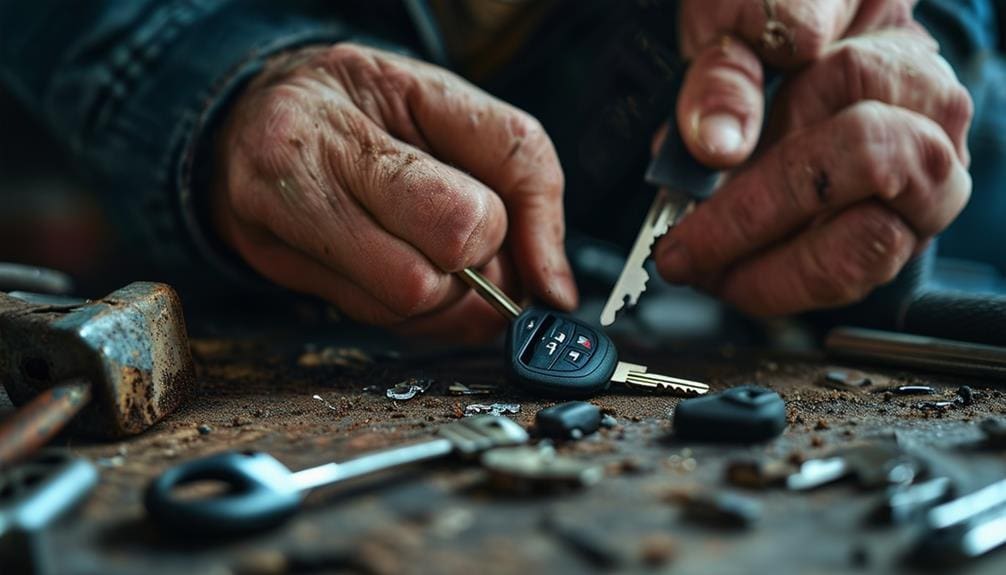
DIY car key cutting carries significant risks, including damage to the key and the vehicle’s ignition if not executed with precision and the right tools. Understanding these risks and challenges is important before attempting this task.
First, you must verify precise measurements. Car keys require exact specifications to function properly. Any deviation can result in a key that doesn’t fit or turn the ignition, leading to lockouts or ignition issues.
Second, mastering the correct cutting techniques is essential. Without proper training, you might cut the key incorrectly, rendering it useless. This can happen easily if you’re unfamiliar with the intricacies of key cutting machines and tools.
Third, accurate programming for electronic keys is a significant challenge. Modern car keys often have transponders that need specific programming. Incorrect programming can prevent the car from recognizing the key, causing further complications.
Finally, consider the potential for costly repairs. If you damage the key or ignition, professional intervention might be required, leading to expensive repairs or replacements.
Here are the primary risks of DIY car key cutting:
- Inaccurate key measurements leading to non-functional keys.
- Improper cutting techniques causing key damage.
- Incorrect programming for electronic keys.
- Expensive repairs due to damage to keys or ignition systems.
Understanding these risks can help you decide whether DIY car key cutting is worth the potential challenges.
Programming Key Fobs
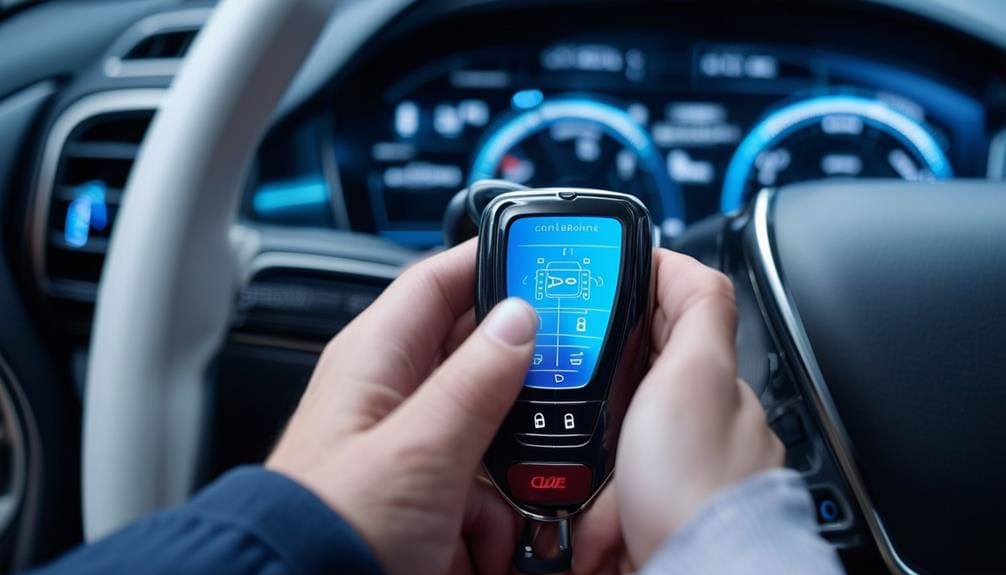
When you’re prepared to program your key fob, start by understanding that each car brand has its own unique method for syncing the fob with the vehicle’s security system. Key fob programming involves linking the fob to the car’s specific code to guarantee proper operation. DIY programming is achievable, especially if you have detailed manufacturer instructions.
To help you get started, here’s what you need to know:
| Step | Action |
|---|---|
| Step 1 | Gather the manufacturer instructions |
| Step 2 | Enter programming mode as directed |
| Step 3 | Sync the key fob following the steps |
First, make sure you have the manufacturer instructions. These will guide you through the process specific to your car brand. Next, enter the programming mode. This usually involves a sequence of turning the ignition key and pressing buttons on the key fob. Finally, follow the steps to sync the key fob with your vehicle’s security system.
Some newer car models may require specialized equipment or professional programming for the key fob to function correctly. If DIY programming appears too intricate or doesn’t work, it might be necessary to consult a professional.
When to Seek Professional Help
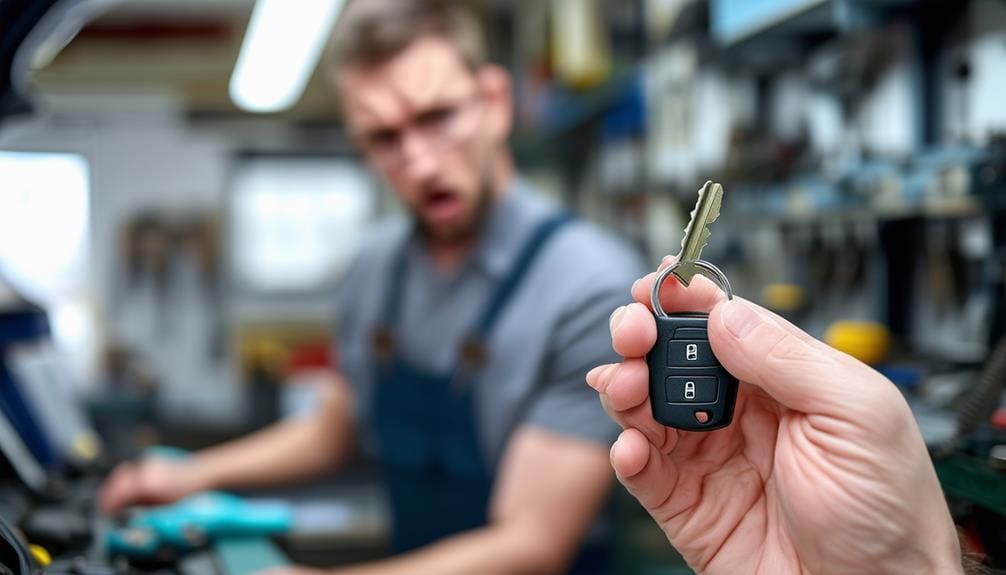
Opting for professional help becomes essential when you face challenges like lacking specialized tools or dealing with complex key types such as transponder keys and smart keys. These situations demand precision and expertise that only professional key cutting services can provide.
Professional locksmiths utilize specialized equipment to guarantee accuracy and proper programming of electronic components. They have the knowledge and tools to handle intricate key cutting processes safely and effectively. Here’s when you should definitely seek professional help:
- Complex Key Types: Transponder keys and smart keys require specific programming and cutting techniques. Professional locksmiths are trained to handle these complexities.
- Lack of Equipment: If you don’t have access to specialized equipment necessary for key cutting, it’s best to rely on those who do. This confirms that your replacement key works seamlessly with your vehicle’s security system.
- Ensuring Security: A poorly cut key can compromise your car’s security. Professional key cutting services guarantee that your replacement key will function correctly and securely.
- Avoiding Damage: Attempting DIY key cutting without proper tools or experience can harm your vehicle’s lock or ignition, leading to costly repairs. Professionals minimize this risk.
Choosing professional help confirms that your replacement key is cut accurately, programmed correctly, and maintains the integrity of your vehicle’s security system.
Maintenance and Care Tips
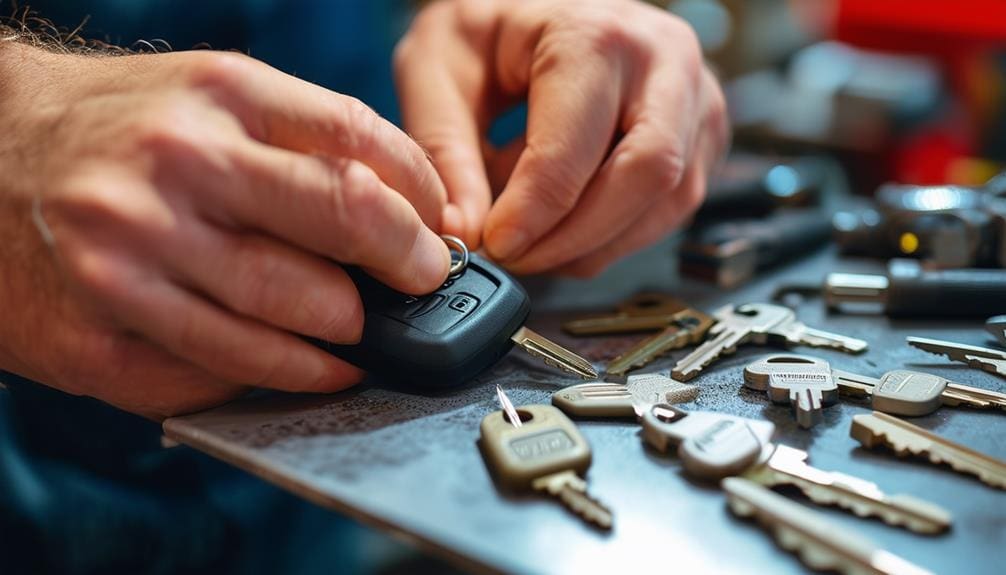
To maintain your car keys operating at their peak, regularly clean them to prevent dirt buildup that can hinder their performance. Use a soft cloth and mild cleaning solution to gently wipe the keys, focusing on any crevices where debris might accumulate. This simple step in car key maintenance ensures optimal key functionality.
Avoid exposing your keys to extreme temperatures, as this can damage the electronic components inside. Store your keys in a moderate environment to prevent issues. For remote or smart keys, check and replace the batteries as needed. A weak battery can lead to interrupted operation, so having extra batteries on hand is a good practice in key care.
Water damage is another concern. Keep your keys dry by avoiding contact with water and storing them in a secure, dry place when not in use. If your keys do get wet, dry them immediately to prevent any long-term damage.
Don’t forget about your spare keys. Periodically inspect and test them to ensure they’re in working condition. This step guarantees you have a reliable backup if your primary key fails. Following these key protection guidelines will help maintain the longevity and reliability of your car keys.
Frequently Asked Questions
Can You Get a Key Cut for a Safe?
You can get a key cut for a safe, but consider safe alternatives. Professional services are recommended due to DIY risks impacting security measures. Key duplication should follow locksmith recommendations to guarantee the integrity of your safe.
How to Stop Thieves Cloning Your Car Key?
Better safe than sorry! To stop thieves cloning your car key, use reputable locksmith services for key duplication, opt for high-security key fob protection, avoid sharing your keys, and monitor keyless entry systems to enhance car security.
Where Is the Safest Place to Keep Car Keys at Home?
The safest place for car keys at home involves key storage in a secure lockbox. Enhance home security with cameras or alarms. Choose key hiding spots away from entry points and guarantee key organization for easy key accessibility and protection.
Can I Program a Car Key Myself?
DIY programming is possible, but it’s a double-edged sword. Key fobs for some vehicle models can be programmed yourself, offering cost savings. However, security concerns and key duplication challenges might necessitate professional help for complex encryptions.
Conclusion
So, is DIY car key cutting feasible? Absolutely, but it requires the right tools, careful steps, and an understanding of potential risks. Are you ready to take on this challenge? Remember, if you encounter difficulties programming your key fob or cutting the key itself, seeking professional help is wise. With proper maintenance and care, your new key will serve you well. Happy cutting!

